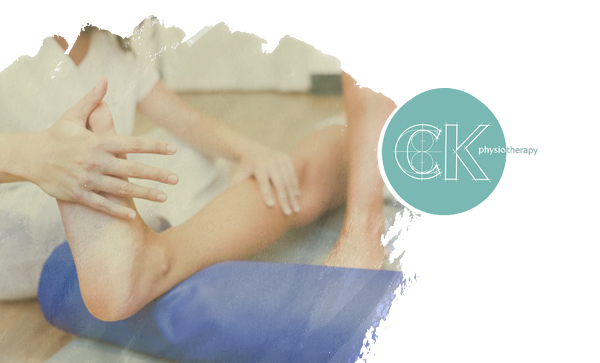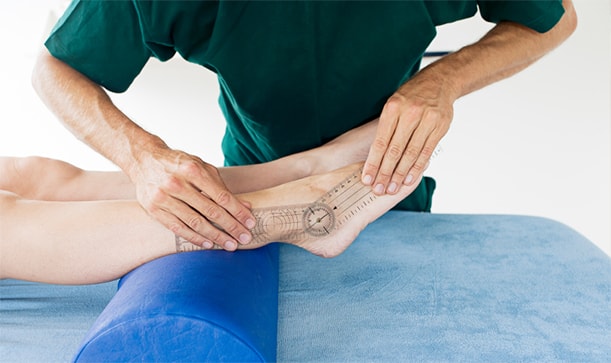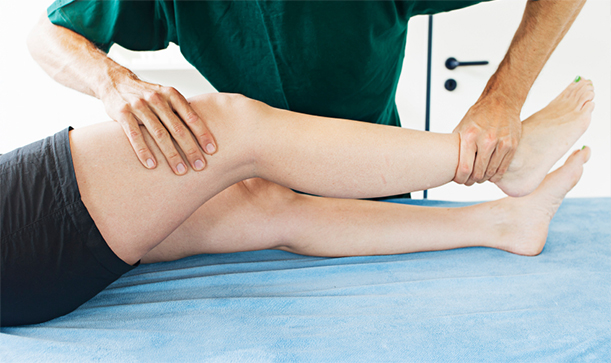CK Physiotherapy
AREAS COVERED
W7, W5, W13, Ealing, West London
57 Elthorne Avenue
Hanwell, W7 2JY
T: 020 8566 4113
M: 079 572 46185
E: info@ckphysio.co.uk
Location / Parking
We are situated in Hanwell, between Boston Manor Road and Northfields Avenue, south of the Uxbridge Road.57 Elthorne Avenue
Hanwell, W7 2JY
There are parking restrictions Mon - Fri 9-10am and 2-3pm. If you need a permit during this time please inform your therapist when you arrive. There are no parking restrictions at other times.
Opening Times
Please phone the number above during working hours to make an appointment. Our reception service will be happy to book your session.
London Underground / Bus Services
London Underground
10 min. walk from Boston Manor Tube Station.
15 min. walk from Northfields Tube Station.
Bus Service
E8, E3, E2, 207, 607, 83
Request Call Back
Our Blog
Patellofemoral Pain Syndrome and How Physiotherapy Can Help
By: BryanKelly (Psst, View author in Google Plus) Date: Feb 25th, 2020Patellofemoral pain syndrome is one of the most common forms of knee pain in the UK. Caused by physical trauma, overuse, or misalignment of the knees or legs, this condition tends to show up in teens and young people who lead active athletic lifestyles. It affects twice as many women as men, presumably because of the difference in physical build. The condition also affects older adults after a lifetime of wear and tear.
However, some of the traditional beliefs about patellofemoral pain syndrome are being disputed as more studies are done, so it's not altogether clear why the condition occurs in some individuals and not in others. The good news is that it can be treated and managed.
So if you or someone you know has knee pain, you'll want to know more about patellofemoral pain syndrome, and how professional physiotherapy can help.

What is Patellofemoral Pain Syndrome?
Also known as runner's knee or movie-goer's knee, patellofemoral pain syndrome is the general term for the presence of pain in the front, in back, or around the knee. It occurs when the nerves in the synovial tissue, bone and tendons and around the knee become sensitive to pain.
The condition receives the nickname of runner's knee because it is a common injury in athletes in high impact sports such as basketball and running. Chondromalacia, also called runner's knee, may or may not occur when you experience patellofemoral pain. This related condition occurs when the cartilage in the knee begins to deteriorate and soften.
Causes and Symptoms of Patellofemoral Syndrome
Patellofemoral pain and chondromalacia are both caused by physical trauma, overuse, or misalignment of the knee resulting in pain and mild swelling. At the same time, knee pain can simply just happen over the course of time, depending upon a person's physical build, their biomechanics, their weight, and the impact that daily wear and tear have on their bodies.
It's important to seek some kind of treatment when you notice the initial symptoms. Leaving them untreated can make symptoms worse and lead to additional problems such as reduced thigh-muscle strength. Here are some of the symptoms you'll experience when you have patellofemoral pain syndrome:
- Pain
- Grinding
- Swelling
Pain
You may experience pain when you bend your knees, squat, attempt to go up or downstairs, or sit for a long period of time (hence the nickname, "movie-goer's knee.") You may also experience pain in your knees when you are resting in bed overnight.
Grinding
You may have a grating or grinding sensation when you bend or extend the knee. In addition, it's common to hear crackling or popping sounds in the knee when you climb up or down the stairs.
Swelling
You might notice mild swelling in the knee area, although this symptom is not always present.
Common Risk Factors
More studies need to be done to fully understand why some people develop patellofemoral pain syndrome and others do not. Below is a list of common risk factors that are traditionally believed to contribute to developing patellofemoral pain syndrome.
- Age
- Gender
Age
Teenagers and young adults with active, athletic lifestyles tend to develop the condition. In addition, older adults can have patellofemoral pain syndrome, with or without chondromalacia present, due to wear and tear on the knee area over time.
Gender
The condition is more common in males than in females. Some researchers say this is due to the female's wider hip area.
Flat feet
Having flat feet can also put you at higher risk of developing patellofemoral pain syndrome because there is greater stress placed on the knees.
High impact sports
Sports like running, basketball, football, handball, pole vaulting, martial arts, and other athletic sports that involve jumping and landing can contribute to patellofemoral pain syndrome.
Prevention to Avoid Having Patellofemoral Syndrome
There are some things you can do to help prevent patellofemoral pain syndrome. The Mayo Clinic recommends the following actions:
5. Work on alignment and technique.
Complete warm-ups and daily stretches.
Take five minutes or more to stretch and warm-up before you run or start any other exercise.
Get the right equipment for your feet.
Be sure that your shoes fit well and have the right absorption. If you have flat feet, check with your doctor about getting inserts. Sometimes your doctor can prescribe custom-made orthotics by completing a thorough evaluation of your legs, ankles and feet.
Lose weight.
If you are overweight, losing that excess weight reduces stress on the knees.
Practice weight training.
By strengthening your quadriceps and hip abductor muscles, you'll help keep your knees balanced when you walk, run, or jump. Stay away from deep squatting during your weight training, and devise an exercise plan where you increase the intensity gradually.
Work on your alignment and technique.
Ask your doctor or physical therapist to give you flexibility and strength exercises which will give you the best techniques for running, jumping, and pivoting.
How Physiotherapy Can Help
Physiotherapy is one of the best-known treatment for patellofemoral pain syndrome, especially when it's used in conjunction with other treatments. These can include wearing the right footwear, using sole inserts or orthotics, avoiding spikes in your exercise routine, lifting weights, and following daily warm-up and stretching routines when you work out.
However, physiotherapy is vital to reducing the pain and managing your symptoms. While some treatment methods like medicines and bands or wraps for the knee may provide short-term relief, without physical therapy they will be ineffective in the long run. Specifically, the role of physical therapy in treating patellofemoral pain syndrome focuses on the following:
• Determining which physical activities contribute to pain and recommending eliminating or reducing those activities.
• Suggesting other ways to reduce stress to the knee, such as using rails when climbing steps, and employing correct techniques when you walk, run, or lift weights.
• Showing you how to use a stabilising wrap or knee band.
• Improving the range of motion of the iliotibial band, a large tendon that runs along the outside of the thigh and stabilises the hip and knee as you run.
• Improving the range of motion of hip flexors and quadriceps.
• Providing you with strengthening exercises for the core, hamstrings, quadriceps, hip abductors, and hip extensors.
About CK Physio
CK Physio is Ealing's leading physiotherapy institute serving Ealing and areas west of London. Our experienced, caring experts provide patients with holistic, hands-on, and non-invasive methods for addressing physical problems. Our chartered physiotherapists use science-based techniques to address cultural, social, and physical factors that impact a patient's mobility and physical health.
In addition to treating mobility issues caused by sports-related injuries, ageing, disease, and other factors, our experts also offer acupuncture, massage, and electrotherapy for joint and muscle pain in consultation with local practitioners.
For more information about how CK Physio can help put you on the road to physical recovery and improve your quality of life, or if you would like to make an appointment, please contact us.





